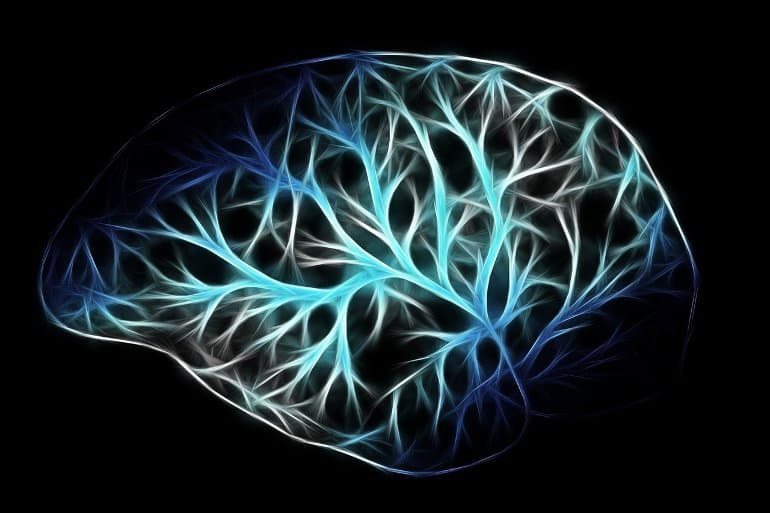Summary: Fragmented tau that accumulates in neurons in those with Alzheimer’s disease may be a new target for drugs to treat the neurodegenerative disease.
Source: UCSF
In a new study of Alzheimer’s disease, researchers at UC San Francisco have discovered that a relatively unstudied form of the tau protein associated with neurodegeneration may be a means for better diagnosis and treatment of the disease.
The form of tau, which is broken into fragments that accumulates in the brains of people with Alzheimer’s, is likely to play a role in the degenerative progression associated with the condition, the researchers say. It is distinct from other tau accumulations that have been the focus of earlier drug development.
Because this type of truncated tau protein is not present in the brains of patients with most other forms of dementia, measuring the fragments in cerebrospinal fluid may be a way to more accurately diagnose or stage the disease.
In addition, the protein fragments, and the enzyme that cuts the protein into pieces, might prove to be promising drug targets for which there are already drugs in development.
“This work really opens our eyes to an important pathogenic process in Alzheimer’s disease that hasn’t been given much attention,” said neuropathologist Lea T. Grinberg, MD, PhD, who co-led the study, published June 2, 2022 in Neuropathology and Applied Neurobiology with Michelle Arkin, PhD, chair of Pharmaceutical Chemistry.
Grinberg, the John Douglas French Alzheimer’s Foundation Endowed Professor, said a “huge” number of neurons within toxic tangles of accumulated tau include these tau fragments. “Experimental work shows that this form of tau likely contributes greatly to the neurodegeneration and cognitive decline in Alzheimer’s,” she said.
Neurons “Not on the Radar”
Researchers have long known that another type of tau, called phospho-tau, is present in neurons affected by Alzheimer’s disease, forming its characteristic and disruptive tangles. Efforts to target this type of tau with drugs have thus far been unsuccessful.
Truncated tau, specifically when it has been fragmented by an enzyme called caspase-6, appears to have a separate role in neurodegeneration in people with Alzheimer’s disease and another form of dementia known as Pick’s disease, according to Grinberg, who is also a member of the UCSF Weill Institute for Neurosciences.
The researchers were able to assess tau in human brains thanks to UCSF’s Neurodegenerative Disease Brain Bank. By observing donated tissue from 37 patients, they found that neurons of some patients with Alzheimer’s disease had both types of tau, while others had only the fragmented tau.
“These neurons are not even on the radar when researchers screen for disease using phospho-tau markers,” she said. “By looking only at changes in phospho-tau, we’re missing a lot of the pathological process.”
In addition, the abundance of fragmented tau observed in patients who had Alzheimer’s and Pick’s disease was barely seen in patients with other forms dementia that involve abnormal tau function, Grinberg said, meaning that detection of fragmented tau may help distinguish between dementias in living patients, which is not currently easy to do.
Leveraging Drugs Already Developed
Enter Arkin, the Thomas William and Frederick John MacWilliam Distinguished Professor whose specialty is designing new ways to detect and treat disease. Her team developed the antibodies to measure the caspase-6-specific fragments.

Following from the human data showing the prevalence of caspase-6 activity, Arkin is working with her colleague, pharmaceutical chemist Adam Renslo, PhD, to develop drug-like inhibitors that halt the ability of caspase-6 to cut up tau proteins.
They hope that such an approach might prove to be a promising treatment for the devastating disease.
“This study gives us a better idea of how we might use these drugs to treat Alzheimer’s, to develop better diagnostic tests and to identify other neurodegenerative diseases might best be treated with these new drugs,” she said.
Authors: Additional UCSF co-authors include Panos Theofilas, PhD; Antonia Piergies; Ian Oh; Yoo Bin Lee; Song Hua Li ; Felipe Pereira, PhD; Cathrine Petersen; Alexander Ehrenberg; Rana Eser; Andrew Ambrose, PhD; Salvatore Spina, MD, PhD; William Seeley, MD; and Bruce Miller, MD.
Funding: This study was funded by National Institutes of Health, Grant/Award Numbers: P01AG019724, P30AG062422, K08AG052648, U54 NS100717, R56AG057528, K24AG053435, K01AG053433, Alzheimer’s Association, Grant/Award Number: AARG-16-441514, UCSF’s Catalyst program, and philanthropy.
About this Alzheimer’s disease research news
Author: Robin Marks
Source: UCSF
Contact: Robin Marks – UCSF
Image: The image is in the public domain
Original Research: Open access.
“Caspase-6-cleaved tau is relevant in Alzheimer’s disease and marginal in four-repeat tauopathies: Diagnostic and therapeutic implications” by Lea T. Grinberg et al. Neuropathology and Applied Neurobiology
Abstract
Caspase-6-cleaved tau is relevant in Alzheimer’s disease and marginal in four-repeat tauopathies: Diagnostic and therapeutic implications
Aim
Tau truncation (tr-tau) by active caspase-6 (aCasp-6) generates tau fragments that may be toxic. Yet the relationship between aCasp-6, different forms of tr-tau and hyperphosphorylated tau (p-tau) accumulation in human brains with Alzheimer’s disease (AD) and other tauopathies remains unclear.
Methods
We generated two neoepitope monoclonal antibodies against tr-tau sites (D402 and D13) targeted by aCasp-6. Then, we used five-plex immunofluorescence to quantify the neuronal and astroglial burden of aCasp-6, tr-tau, p-tau and their co-occurrence in healthy controls, AD and primary tauopathies.
Results
Casp-6 activation was strongest in AD and Pick’s disease (PiD) but almost absent in 4-repeat (4R) tauopathies. In neurons, the tr-tau burden was much more abundant in AD and PiD than in 4R tauopathies and disproportionally higher when normalising by p-tau pathology. Tr-tau astrogliopathy was detected in low numbers in 4R tauopathies. Unexpectedly, about half of tr-tau positive neurons in AD and PiD lacked p-tau aggregates, a finding we confirmed using several p-tau antibodies.
Conclusions
Early modulation of aCasp-6 to reduce tr-tau pathology is a promising therapeutic strategy for AD and PiD but is unlikely to benefit 4R tauopathies. The large percentage of tr-tau-positive neurons lacking p-tau suggests that many vulnerable neurons to tau pathology go undetected when using conventional p-tau antibodies. Therapeutic strategies against tr-tau pathology could be necessary to modulate the extent of tau abnormalities in AD. The disproportionally higher burden of tr-tau in AD and PiD supports the development of biofluid biomarkers against tr-tau to detect AD and PiD and differentiate them from 4R tauopathies at a patient level.






